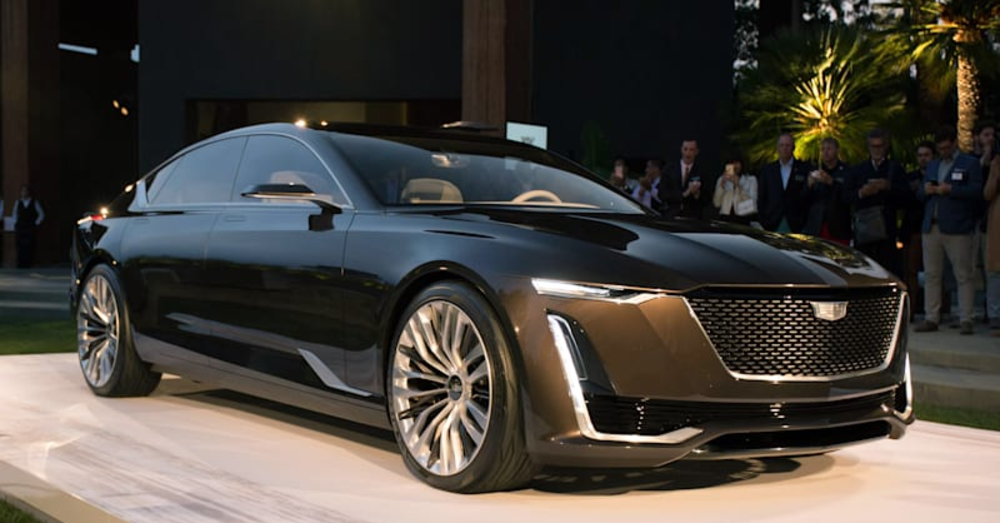
Bigger EV Models Means Tax Credit Incentives are Returning
The day when zero-emission vehicles are trucks and SUVs has arrived and with these larger models, EV tax credit incentives are back.
While the tax credits for hybrids and EVs had never gone away, some companies, namely GM and Tesla, had expired their tax credits and could no longer offer customers a break on their taxes for buying an EV or hybrid vehicle. With the recent news of proposed credits are being considered in Congress, that large SUV or EV truck that you drive just might qualify.
A New Proposal
The latest proposal that has made its way in the House of Representatives would give buyers a tax deduction of $12,500 on some of the more expensive zero-emission vehicles going forward. There should be a vote on this bill in the upcoming days to give us a better idea if those larger hybrid and EV models will receive the deduction that could spurn an increase in EV sales going forward. As you would expect, there are other items in the bill, including paid family leave, but the main focus of this bill is to offer a credit to pricier electric vehicles.
Eligibility Increases, Income Requirements Lower
Shoppers that make more than a specified income level will not be eligible for the new tax credit, which is in keeping with the current plan to offer tax breaks to individuals and families that make less than $400,000.Specifically, individual filers with an adjusted gross income of $250,000 or less ($500,000 or less for joint filers) will be eligible for the tax credit. This number is down from the previous level of $400,000 or less for individuals ($800,000 or less for joint filers).
Vehicles that will be eligible for the credit will have an MSRP of $80,000 or less for vans, SUVs, and trucks, while sedans will continue to only be eligible for the credit if the price is at or below $55,000 for the vehicle. The level for vans, SUVs, and trucks has increased significantly from the previous version, and this plan is expected to cost around $15.6 billion over the next ten years.
Opposition to the Bill
As you would expect with any bill, there is some opposition to what this EV tax credit bill includes. The proposal will give a big boost to sales of EVs, but current opposition comes from the opposing party, foreign automakers, and foreign governments.
We seem to always expect the opposing party opposition to any proposal in the most recent political climate, which means we’re going to simply ignore that aspect of the challenges right now. Within the bill, additional credit will be given to buyers who choose vehicles that are union-made and another incentive for U.S.-made batteries. Once again, both of these factors are in line with the current administration and the goal to not only build electric vehicles but build them in the United States, using U. S. labor to get the job done.
While U. S. labor is being used at most of the Toyota and Teslafactories in the country, neither company is part of the UAW, and therefore, vehicles made by them would not qualify for these additional credits. The incentives for vehicles that are union-made will be $4,500 per vehicle and an additional $500 per vehicle with U.S.-made batteries. Additionally, vehicles would have to be made in the United States starting in 2027 to qualify for any of the $12,500 credit.
As you might expect, that last part has incensed the Canadian government. Currently, many vehicles are made in Canada, even some that wear the badges of the Detroit Big Three automakers.
This Bill has the Support Needed
As much as some companies and politicians might oppose this new EV tax credit bill, all the support needed is in place. With the President, Congressional Democrats, and the United Auto Workers union backing this bill, it’s easy to see how this bill is likely going to pass and become part of our car shopping for the future.
It’s pretty hard to argue with a bill that incentivizes buying a vehicle from one of the GM, Chrysler, or Ford brands that are all truly American companies. There’s been a longstanding goal to find ways to make these three automakers more attractive to shoppers, and this is certainly one way to make that happen.
Incentives for Tesla and GM
The two automakers that faced the toughest days of the elimination of the previous EV tax credit were Tesla and GM. The cap was set at 200,000 vehicles receiving the full credit when the initial bill was passed, which was thought to be nearly unachievable at the time. Both GMV and Tesla have reached a point where their vehicles were being sold with a lesser tax credit than the initial $7,500 that was offered.
This new bill will eliminate the phasing out of the previous credit and make both GM and Tesla eligible for the credits once again. This should help Tesla in the future with some of the new models being proposed that will fall within the guidelines of the bill.
Additional Elements of the EV Tax Credit Bill
This new bill would also create an electric bike tax credit, a 30 percent credit for commercial electric vehicles, and a $4,000 used EV tax credit. This could be a huge boost in the EV market with no credit previously offered for used models that were sold to the next owner.
While we wait to see if this new bill will pass, we can see the goals of the current administration are being put into action. Some of the goals that were set forth after the election are coming to light with the desire to incentivize Americans to buy electric vehicles and other zero-emission vehicles that are eco-friendly and being made in larger numbers. If this bill passes, we will see more automakers working to take advantage of the credits with their own electric SUVs, minivans, and trucks.
This post may contain affiliate links. Meaning a commission is given should you decide to make a purchase through these links, at no cost to you. All products shown are researched and tested to give an accurate review for you.



